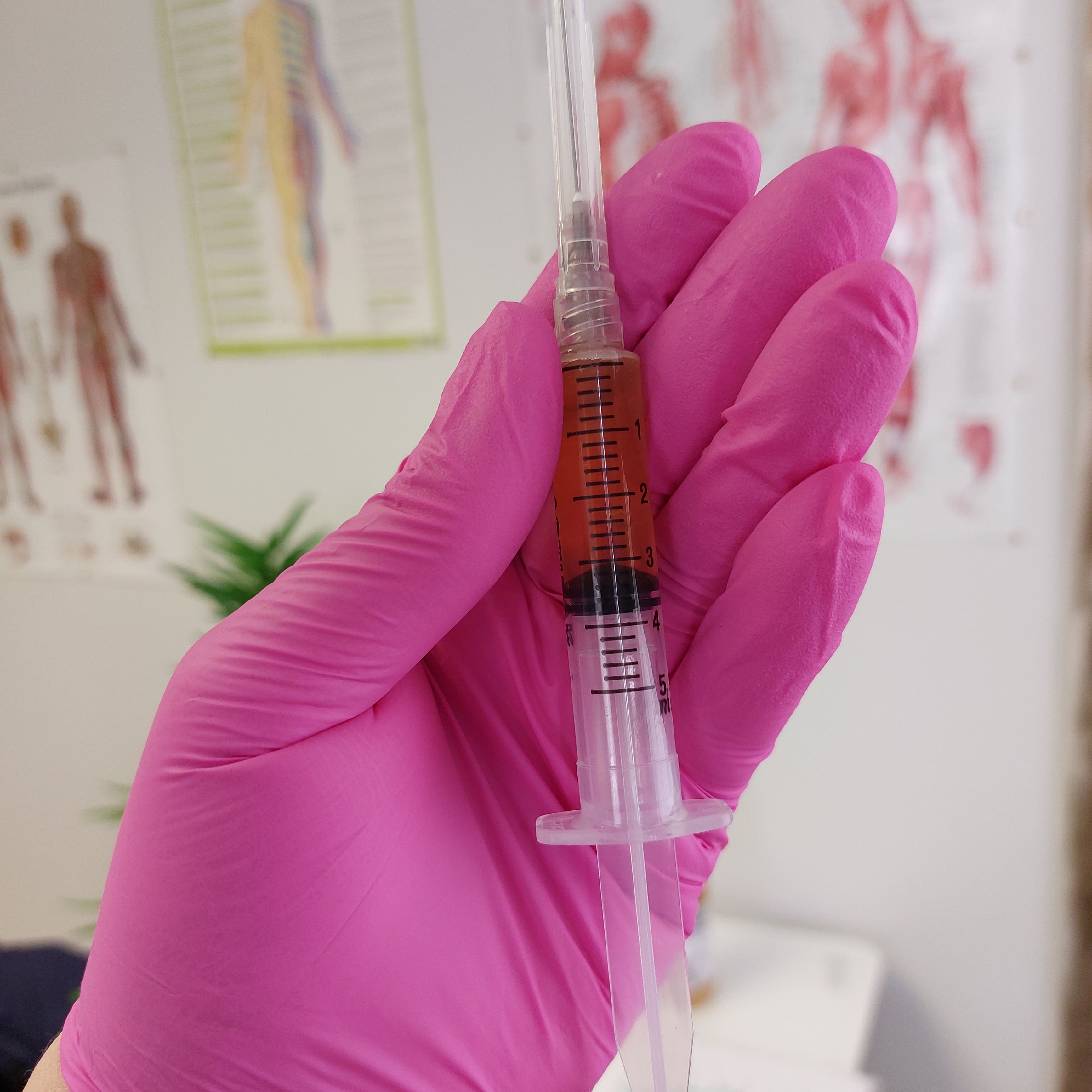
PRP Joints and Soft Tissue Injections An Alternative Treatment for Chronic Pain
Old injuries and chronic conditions can mean ongoing pain that is difficult to treat with over-the-counter medications or heat and ice packs. However, opioid use can be addictive and prove less effective as time goes by. More and more patients are finding relief from natural, safe, PRP therapy - a treatment that uses your body’s own natural healing mechanisms to help regenerate damaged tissues and relieve pain.
Platelet-rich plasma is a component of blood that has a positive effect on the regenerative and growth processes of tissues and cells. Thanks to the high content of platelets and growth factors, peptides that trigger cell division, plasma is also ideal for pain and regenerative therapy for patients after surgery, as well as supporting the treatment of diseases such as osteoarthritis especially knee and shoulder as well as chronic pain and intra-articular injuries of the shoulder or knee.
Platelet Rich Plasma therapy in orthopaedics as a Chronic Pain treatment
All kinds of rheumatoid diseases and orthopaedic injuries are associated not only with the need for drug therapy, specific procedures including surgery, weakness and tissue defects, but also with the pain that the patient actually struggles with on a daily basis.
Platelet Rich Plasma therapy in orthopaedics plays not only a therapeutic role. It also relieves pain, due to the unique properties of plasma rich in growth factors. In addition, this type of therapy reduces the risk of infection by strengthening the body's defences, contributes to faster healing of injuries, reduces swelling and shortens the recovery period.

Patients undergoing platelet-rich plasma (PRP) therapy:
- Who have suffered orthopaedic injuries, including intra-articular damage to the meniscus, knee ligaments, rotator cuff injuries, bursitis of the shoulder joint
- Suffering from chronic pain, enthesopathies, Tennis and Golfer's elbow, Jumper's knee, Calcaneal Spur, Achilles tendonitis
- With abnormal bones fusion
- Who have Articular cartilage loss after surgery
- With a chronic Osteoarthritis and any other musculoskeletal conditions
What does the PRP treatment look like?
The Platelet Rich Plasma treatment is associated with minimal risk, because the material used for treatment is taken directly from the patient, thanks to this, it shows biological compatibility, thus excluding the formation of an allergic reaction.
As far as pain sensation is concerned, it is subjective for each patient and applies only to the moment of puncture, which takes place during blood collection and subsequent injection of isolated plasma.
PRP procedure stages
- The blood is withdrawn from the patient vein.
- Then the material is placed in a centrifuge , during this process it is possible to separate plasma and platelet-rich concentrate
- The platelet-rich plasma obtained in this way is injected into the selected injury area
The treatment effects are visible after several days, during this time, fibroblasts are stimulated to create new collagen fibres. The most important post-treatment recommendation is not to take anti-inflammatory drugs (NSAIDs) for next few days, do not drink alcohol and do not overload the injected area.
Summary
Platelet Rich Plasma therapy is a modern medicine tool in the fight against pain and diseases of the joint and skeletal system.
It consists in isolating the material needed for the procedure PRP from the patient's blood, and then injecting it in a specific place. Platelet-rich plasma contains a large amount of peptides - growth factors that stimulate fibroblasts (connective tissue cells) to produce collagen. Thanks to this mechanism of action, plasma therapy is used in orthopaedic diseases related to tissue defects in the joints, ligament or cartilage injuries, as well as in the treatment of chronic conditions - osteoarthritis or degeneration of the joints.